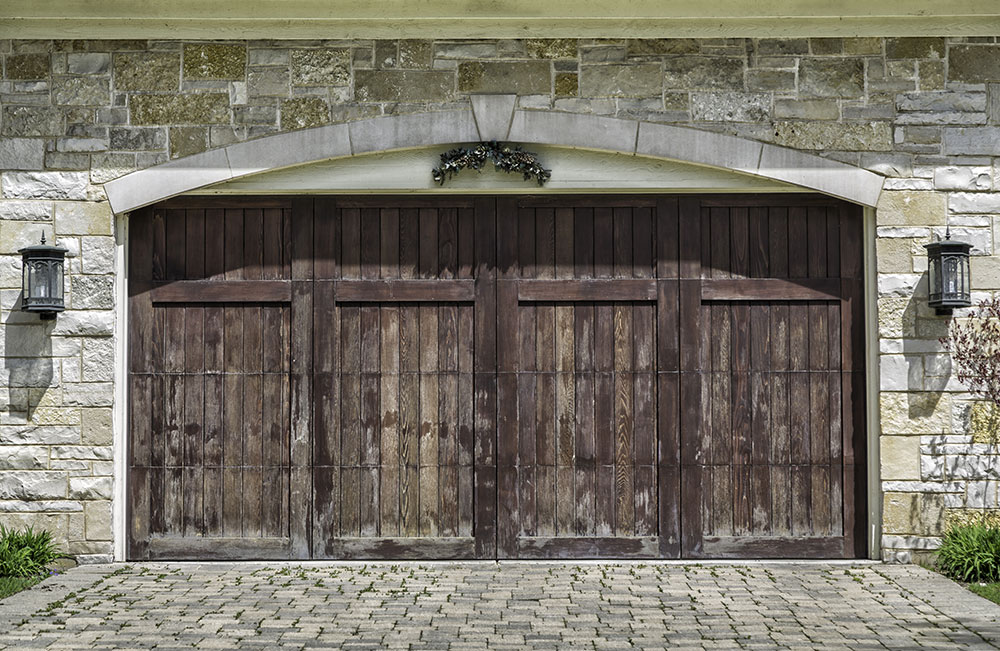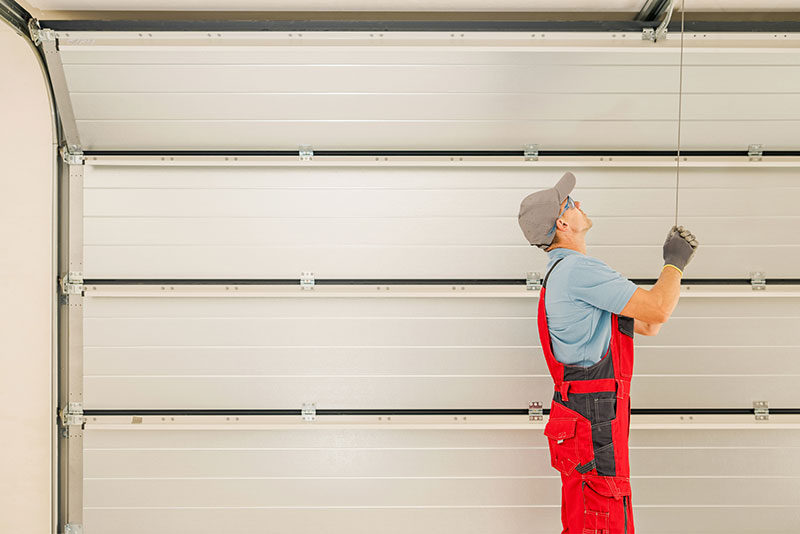When you’re standing in your driveway considering a garage door replacement, the material decision can feel overwhelming. Real wood versus synthetic plank garage doors each offer compelling advantages, but which one actually makes sense for your North Dallas home?
After years of helping homeowners across North Dallas make this exact choice, we’ve learned that there’s no universal “best” option. What matters is matching the right material to your specific needs, budget, and lifestyle.
Key Takeaways
- Real wood doors provide unmatched natural beauty but require consistent maintenance in Texas weather
- Synthetic plank options deliver wood-like appearance with significantly less upkeep
- Climate considerations in North Texas heavily influence material performance and longevity
- Initial cost differences often balance out over the door’s lifetime when factoring in maintenance
- Professional installation ensures optimal performance regardless of which material you choose

What’s the Difference Between Real and Synthetic Wood?
The garage door industry has evolved considerably over the past decade. Where homeowners once faced a simple choice between basic steel and expensive wood, today’s options are far more nuanced.
- Real wood garage doors are crafted from natural timber materials like cedar, redwood, or mahogany
- Synthetic plank doors use engineered composite materials designed to replicate wood’s appearance
- Both categories now offer extensive customization options for hardware, stains, and architectural details
- Installation requirements vary between materials, affecting both timeline and costs
- Performance characteristics differ significantly based on local climate conditions
Why Your Material Choice Matters More Than You Think
We’ve seen too many homeowners focus solely on upfront costs, only to regret their decision three years later when maintenance reality sets in. Your garage door material choice impacts you and your home in ways that extend far beyond curb appeal.
The financial implications alone are substantial. Garage doors represent one of the largest exterior investments you’ll make in your home, often affecting property values by thousands of dollars. But the ongoing costs vary dramatically between real wood and synthetic options.
Beyond money, there’s the time factor. Some materials demand regular attention, while others can go years with minimal care. In our experience working throughout Richardson, Carrollton, and Irving, we’ve found that homeowners often underestimate how much they’ll actually enjoy (or resent) weekend maintenance tasks.
Weather resistance plays a huge role here in North Texas. Our combination of intense summer heat, occasional severe storms, and humidity fluctuations can be tough on certain materials. What works beautifully in Colorado might struggle in our climate.

Real Wood vs. Synthetic Plank: The Honest Comparison
Both materials can create stunning garage doors, but they achieve different goals through different approaches.
Real wood offers something synthetic materials can’t quite replicate: authenticity. When you run your hand along a cedar garage door, you feel the natural grain patterns and subtle texture variations that only occur in living timber. The aging process creates character that many homeowners find appealing.
Synthetic plank technology has improved dramatically in recent years. High-quality composite materials now mimic wood grain patterns with surprising accuracy. While they don’t fool anyone up close, they create convincing wood appearance from typical viewing distances.
Here’s what we’ve learned works best for different situations:
- Choose real wood when authentic appearance matters more than maintenance convenience
- Select synthetic plank when consistent performance and minimal upkeep are priorities
- Consider your neighborhood’s architectural style and existing materials
- Factor in your available time and interest in ongoing maintenance projects
- Evaluate how each option complements your home’s overall design aesthetic

Real-World Considerations for Texas’ Climate
Real Wood Maintenance in Texas Heat and Humidity
Texas weather doesn’t go easy on natural wood materials. The combination of intense UV exposure during our long summers and occasional high humidity creates challenging conditions. Most real wood garage doors need refinishing every 2-3 years to maintain their appearance and weather protection. We’ve seen homeowners struggle with this reality, especially when they initially planned on “minimal” maintenance.
Synthetic Plank Appearance Limitations
While synthetic materials have improved significantly, they still can’t perfectly replicate wood’s natural variations. The grain patterns, though convincing, often display subtle repetition that becomes noticeable over time. For homeowners who prioritize authentic wood appearance, this limitation can be frustrating.
Cost Considerations Beyond Initial Purchase
The upfront price difference between materials often narrows when you factor in long-term expenses. Real wood doors typically cost more initially but may require hundreds of dollars in maintenance supplies and labor over their lifespan. Synthetic options cost less upfront and require minimal ongoing investment, but replacement cycles can be shorter in some cases.
Installation Complexity Differences
Real wood doors often weigh more than synthetic alternatives, sometimes requiring additional structural support or upgraded hardware. This can add complexity and cost to installation projects. Synthetic plank doors typically install more straightforwardly, though quality varies significantly between manufacturers.
Weather Resistance in North Texas Climate
Our local weather patterns create specific challenges for both materials. Real wood expands and contracts with humidity changes, potentially affecting door operation if not properly maintained. Synthetic materials resist moisture but can become brittle under prolonged UV exposure, leading to cracking or fading over time.

There Can Be More to the Decision
Sometimes the “conventional wisdom” about garage door materials doesn’t match real-world situations. We’ve encountered homeowners whose specific circumstances required thinking beyond typical recommendations.
Historic homes often present unique challenges where neither option works perfectly without modifications. HOA requirements sometimes specify materials that don’t align with practical considerations. Budget constraints might force compromises that require creative solutions.
When you’re dealing with unusual architectural requirements or specific performance needs, it’s worth consulting with professionals who understand local conditions and installation challenges. Generic online advice often misses the nuances that matter in actual implementation.
Make the Choice That’s Right for You
The real wood versus synthetic plank decision ultimately comes down to matching materials to your specific situation and priorities.
- Real wood delivers unmatched natural beauty but demands regular maintenance investment in our climate
- Synthetic plank provides reliable performance with minimal ongoing care requirements
- Local weather conditions significantly impact both material performance and maintenance schedules
- Professional consultation helps identify the optimal choice for your home and lifestyle needs
- Both materials can enhance property values when properly selected, installed, and maintained
Your garage door material choice affects your home’s appearance, maintenance schedule, and budget for years to come. Take time to honestly assess your priorities and capabilities before making this important investment in your North Dallas home. So which would you choose? Still can’t decide, give us a call today to set up your complimentary consultation.


